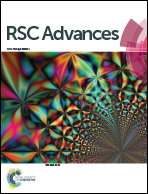Discovery of anti-inflammatory components from Guge Fengtong tablet based on inflammatory markers and exploration of its molecular mechanism†
Abstract
Guge Fengtong tablet (GGFTT) is a Chinese herbal preparation which is widely applied to treat rheumatoid arthritis. In this work, we aim to discover the main anti-inflammatory components from GGFTT based on inflammatory markers and to explore its molecular mechanism. The components in GGFTT were screened by lipopolysaccharide induced macrophage RAW264.7 cells and TNF-α induced 293 cells which co-transfected with NF-κB. Based on the results of anti-inflammatory effects, we established and validated a reliable liquid chromatography-mass spectrometry method for the simultaneous determination of the 10 active compounds (10C) screened in GGFTT. The results of bioactive equivalence indicated that the combination of 10 active compounds could be considered as the bioactive combinatorial components in GGFTT. Further investigations suggested that GGFTT and 10C could significantly decrease the production of TNF-α, IL-1β, IL-6 and iNOS. 10C exerted comparable anti-inflammatory effect against NF-κB and MAPKs signaling pathways as GGFTT. Both of them could inhibit the phosphorylation of p65 and IκB-α, block the nuclear translocation of p65 as well as decrease the phosphorylation of ERK1/2 and JNK. The results of the present study has a great potential in promoting standardization of GGFTT and could be extended to improve quality control of herbal medicines.


 Please wait while we load your content...
Please wait while we load your content...